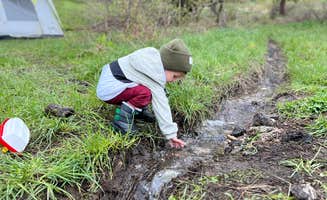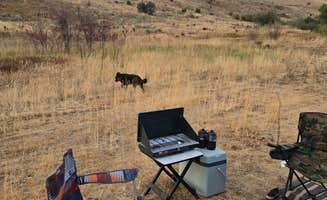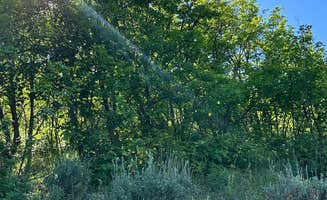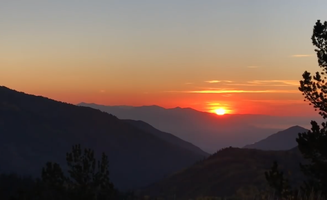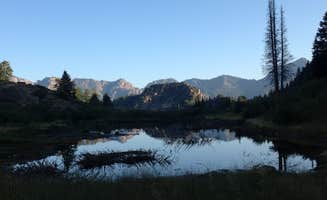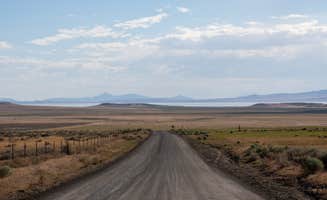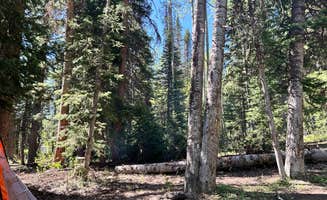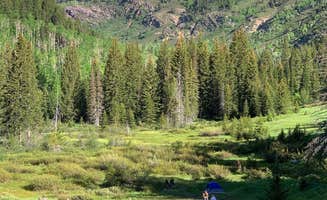Primitive camping near Syracuse, Utah provides access to rugged mountain terrain and high-desert landscapes across Bureau of Land Management (BLM) and National Forest lands. Elevations in these dispersed camping areas range from 4,300 feet at Skull Valley to over 9,000 feet at Monte Cristo, creating dramatic temperature variations between sites. Summer temperatures typically reach 85-95°F during days, while nighttime temperatures can drop to 30-40°F at higher elevations.
What to do
Hiking from camp: Millcreek Canyon Backcountry Camping and Yurts offers numerous trails directly accessible from campsites. "Millcreek Canyon is home to some wonderful trails that can be accessed by foot or bike. Although the canyon offers many hiking trails, the main use of the trails seems to be for trail running," notes one camper. The backcountry requirement to camp at least 1/2 mile from roads ensures private sites with trail access.
Wildlife viewing: Middle Fork Conservation Area provides habitat for local wildlife. At Millcreek Canyon, a camper reports, "Good trails to approach from are Church fork and Lambs Canyon Trailhead. Lambs Canyon is much more shaded and provides views down the canyon into Salt Lake Valley from the saddle." The area supports diverse wildlife populations throughout the seasons.
Photography opportunities: Fall colors create striking landscapes at Monte Cristo where one visitor shared, "We could not have asked for a more perfect spot. The views were immaculate, the sites were very spread out, it was the end of September and all the leaves were changing." Morning and evening light creates optimal conditions for landscape photography, especially during seasonal transitions.
What campers like
Seclusion with accessibility: At Dispersed camping near Monte Cristo, campers appreciate the balance of remoteness and vehicle access. "Very surprised by this dispersed camping. Good Spread, amazing views and the road up ain't bad at all," notes one reviewer. Sites are typically 10-20 minutes from paved roads but feel remote.
Cooler temperatures: Higher elevation sites provide relief from summer heat. One camper at Horseshoe Knoll noted, "Nice place for a night. Fun if you have a Side by side or mountain bike. Some sites are very accessible, others need 4x4." Elevation differences of 2,000-4,000 feet between valley floor and camping areas create natural air conditioning during summer months.
Seasonal timing: Camping during fall offers unique experiences. At Monte Cristo, a visitor shared, "It was the end of September and all the leaves were changing. No notes. Can't recommend this spot enough." Fall camping typically runs from mid-September through mid-October before winter conditions limit access to higher elevations.
What you should know
Road access challenges: Many sites require navigating unmaintained roads. At Mineral Basin Dispersed, "The ride up to mineral basin was dirt roads with amazing views. The campsite we settled on was absolutely beautiful." However, seasonal closures affect accessibility. Another camper warned, "We couldn't access early June road still closed past the ski resort."
Early arrival essential: Popular areas fill quickly on weekends. At Monte Cristo, a camper advised, "There are tons of free site all up and down the main road. The only problem is it is busy if you leave on Friday plan to get there by 3 at the latest. Spots fill quick." Thursday arrival is recommended during summer months for better site selection.
Weather preparedness: Mountain elevations create unpredictable conditions. Millcreek Canyon experiences significant temperature variations, with one camper reporting their site "was COLD" with early morning temperatures dropping into the teens. Temperature swings of 30-40 degrees between day and night are common at higher elevations.
Tips for camping with families
Accessible water features: Horseshoe Knoll - Dispersed Camping offers sites near water sources. One family noted, "Good dispersed campsite, especially if you're on a road trip along I-80. Rumor has it there's a neat stream nearby." The proximity to shallow water features provides natural play areas for children while requiring appropriate supervision.
Wildlife education opportunities: Millcreek Canyon provides regular wildlife sightings for educational experiences. "We love Millcreek Canyon for camping, hiking, or even just going up for dinner at their day use spots. Pet friendly. One of our families favorite canyons. We take tubes and float in areas of the river. The kids play in the river," shares a family camper.
Cleanliness considerations: Some sites have trash issues requiring advance preparation. At Bountiful B Dispersed, a camper warned, "The site was LITTERED with spent ammo, broken glass and broken pieces of clay pigeons. Another group camping near us told us they found the same at their site so be weary of where you step up here." Bringing trash bags and doing a quick site cleanup before setting up camp improves safety for children.
Tips from RVers
Site selection strategy: Skull Valley Rd Dispersed Camping accommodates various RV sizes with proper planning. A camper noted, "We brought a 30' RV with a lifted Ram 2500 and had no problem driving over the washouts." Arriving during daylight hours allows for better assessment of access roads and turning radius requirements.
Level spot scarcity: Finding sufficiently level areas for larger rigs requires scouting. At Monte Cristo, one RVer shared, "About 1/4 mile down a dirt road from Hwy 39 is a good single boondocking spot with a great view. Not for large RVs. Our 17 ft trailer with 4x4 was tricky to get into the spot because the loop was so small." Most sites accommodate trailers under 25 feet, with larger rigs limited to main road pull-offs.
Wind exposure considerations: Valley locations experience significant wind. At Skull Valley, campers report, "Once it does start to go down it gets real windy. All the breeze from the salt flats comes right your way." RVers should secure awnings and use wheel chocks on slopes to prevent wind-related movement.


